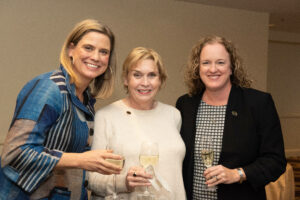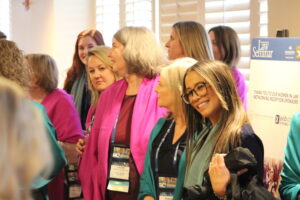This month, as spring rush gets underway at some colleges and universities, my daughter is following in my footsteps and serving as her sorority’s recruitment chair. As I watched and listened to her during winter break, I was reminded just how similar Greek recruitment is to my role as head of communications and marketing for a professional membership organization. Actually, the similarities were staring me right in the face. Why had I never noticed?
As we talked, I was transported back to college and thinking of my work today. Rule number one in Greek recruitment is: Make every person in the room feel welcome. Isn’t that what we strive to do in any membership organization? Whether you have 100 members or 100,000, each and every member matters. Successful membership organizations know that members want to be treated as individuals. At associations, it’s our responsibility to help our members connect, ask questions and find solutions, offer innovations and technology, grow professionally, and feel as they belong.

I recalled the giddy bid day feeling, that “rush” sensation as you welcome the new pledge class. I thought about how excited I get each month when CAI’s membership team delivers its report. Did the association meet its membership goals? Where are our new members from, and what do we want them to know about us?
And then the conversation turned to angst. As I listened to my daughter describe how upsetting it is to watch sorority sisters go inactive or take alumni status, I truly felt her pain. It’s the exact feeling I get when I hear that a CAI member doesn’t renew.
I explained that recruitment often can be easier than engaging and retaining members. All membership organizations must constantly prove their value and learn what keeps members coming back for more. This month, I watched more than 600 CAI members gather in New Orleans for the Community Association Law Seminar. It brought me and my colleagues joy as we watched them happily grow, learn, and connect with each other. The smiles on their faces, embracing new experiences, and the buzz weeks later is proof we made a lasting impact.

Why had I never made the connection to the lessons I learned decades ago to my work today? As a sorority leader, I discovered my home away from home. I formed forever friendships with some of the most amazing women across the country. I began to build a professional foundation with the skills to be successful today.
As CAI’s membership continues to grow each month, I am proud to support the professionals who choose our community. I am eager to help them grow, learn, connect, and thrive. Each new member is a cause for celebration, and a huge reason to feel that giddy rush sensation.
“We know that many community association board members, managers, and business partners join CAI for education, professional development, and resources to help them in their respective roles. We also know many members renew because of the connections they make with peers—exchanging information and ideas, growing their networks, and making lifelong friendships,” says Crystal Wallace, CAE, CAI’s senior vice president for membership and chapter relations. “CAI is constantly striving to grow with new members, but we also put a very high value on engaging and retaining members.”

I’m curious. What makes you join a membership organization? And what keeps you coming back for more?
Share your thoughts below.


